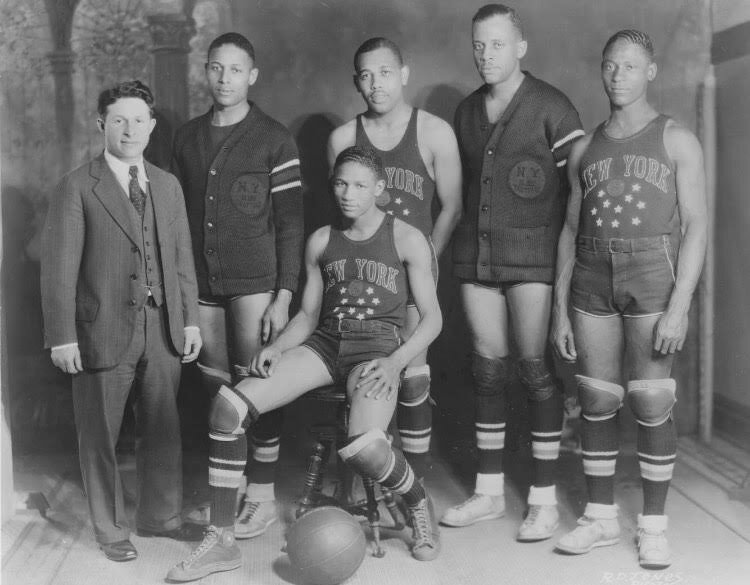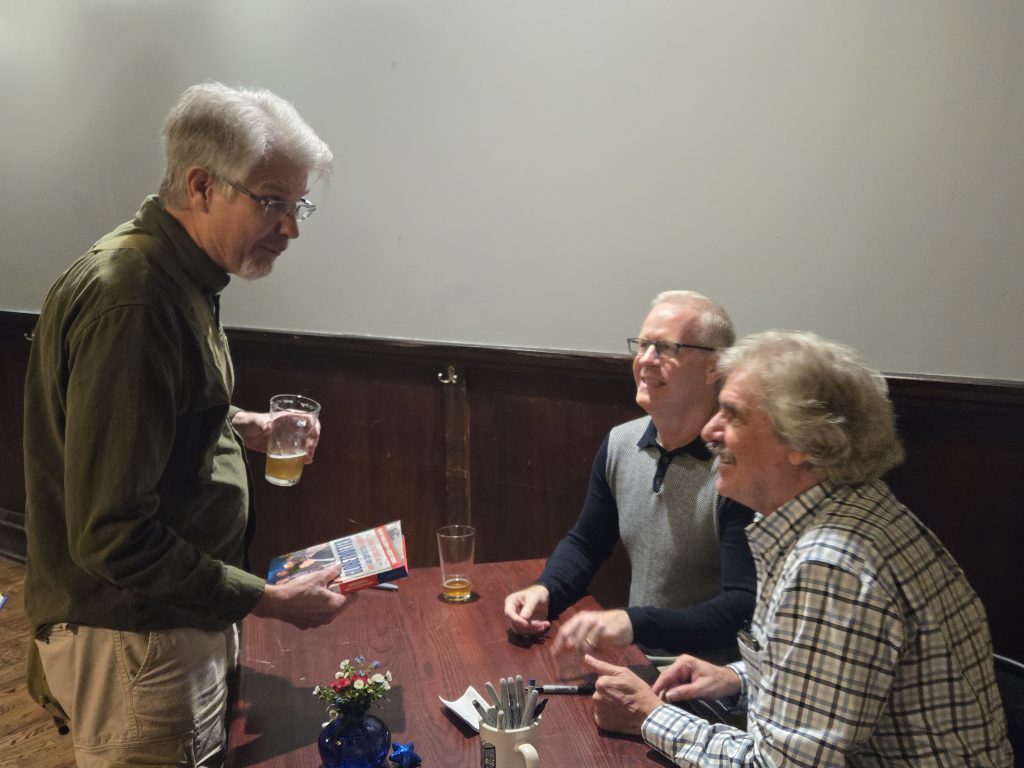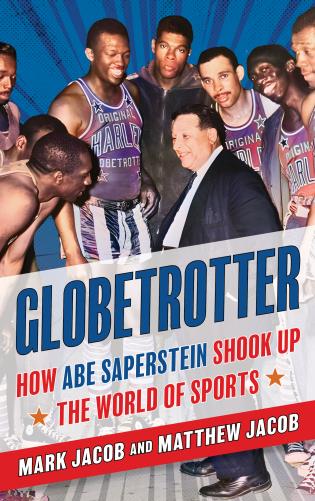Abe Saperstein was the founder and owner of the Harlem Globetrotters, a tireless showman, promoter and scout. In addition to helping popularize and integrate pro basketball, he made a huge contribution to integration and baseball as well. Journalist Mark Jacob, along with his brother Matt, recently published a biography of Saperstein, who (no surprise when you think about it) was good friends with Bill Veeck and Satchel Paige. Today and next Sunday, Mark and Matt Jacob will discuss his promotion of the Negro Leagues, his partial ownership of the Birmingham Black Barons and the complicated racial dynamics involved. (Part 1 of 2)
Q: Abe Saperstein is best known for creating the Harlem Globetrotters, but he was also deeply involved in baseball, right?
Abe’s promotion of baseball isn’t well known, but it was extremely important. He helped keep the Negro Leagues in business when they were struggling in the 1930s and ‘40s. Back then the Black leagues needed to add barnstorming games with non-league teams to stay out of debt. Abe and other white promoters, many of them Jewish, helped arrange those games. Abe also was a part owner of the Birmingham Black Barons. Later he helped break down the color barrier and bring Black players into the major leagues. Abe was friendly with Negro League stars such as Satchel Paige and Ted “Double Duty” Radcliffe, and he boosted their careers.

Saperstein, at left, with the Savoy Five (precursor to the Globetrotters) in 1926
Q: Was his association with the Negro Leagues mutually beneficial?
Without a doubt. Abe promoted the Negro Leagues’ all-star games, which drew huge crowds to Chicago’s Comiskey Park and were major social events. Abe took a 5 percent cut, which annoyed some Black owners, but he made sure the games drew big crowds. . The 1939 East-West game drew about 40,000 fans, the most up to that point for a Negro Leagues all-star contest – and roughly double the crowd for the season’s second East-West game, played weeks later at New York’s Yankee Stadium without Saperstein handling publicity. In 1941, Saperstein again managed publicity for the East-West game at Comiskey Park, and made it another record-setter, with 50,256 fans showing up.
While some Black owners resented the fact that they had to go through white promoters like Abe to book games in some stadiums, others recognized how he helped them meet their payroll. Abe’s connections with Black baseball also helped him with his basketball team. A Black Barons first baseman named Goose Tatum eventually switched to basketball and became one of the Trotters’ biggest stars.

The 1946 Birmingham Black Barons
Q. You mentioned some resentment with Saperstein’s activities in Black baseball. Tell us more.
Saperstein came under criticism for booking games for a racially demeaning team called the Zulu Cannibal Giants. The team dressed in grass skirts, face paint and nose rings. Some even played barefoot. Some newspapers accurately reported that the African tribesmen image was hokum, but The Indianapolis News described the players as “real natives of the Zulu colony who have been brought to America and schooled in the American national pastime.”
Saperstein also booked games for the Ethiopian Clowns, a team initially based in Miami that wore face paint and took fake African names but didn’t wear grass skirts. Black sportswriter Wendell Smith, who would later become a close friend of Saperstein, decried the Clowns as a “fourth-rate Uncle Tom minstrel show.”
Black team owners became angry at Saperstein when some of their scheduled games were canceled because the opposing team had signed a deal with him to play the Clowns that same day for more money. Abe was controversial enough that Black baseball official Cumberland “Cum” Posey said the Negro Leagues were divided between “the anti-Sapersteins and the pro-Sapersteins.”
Q: Tell us how Saperstein plotted with fellow Chicago sports promoter Bill Veeck to sneak an all-Black team into the major leagues.
Both Veeck and Saperstein thought racial segregation in sports was ridiculous. In 1942 when Veeck’s minor league Milwaukee Brewers were in spring training in Florida, he went into the “colored only” bleachers section to talk to fans. A sheriff asked him to leave and he refused. He even ignored the town’s mayor, who had been summoned to the ballpark. Saperstein had a more complicated record on race – including the connection to grass-skirted players – but he also stood up for Black athletes’ ability to compete with anyone and promoted Black people to leadership positions in his organization.

Matt and Mark Jacob chat up local reader Paul Erickson at their book launch party this month.
Five years before Jackie Robinson broke the color barrier in the major leagues, Veeck and Saperstein plotted to buy the Philadelphia Phillies and make them an all-Black team. They thought it might be more practical to have a separate Black team than to get individual white teams to integrate. They talked about springing the idea on the rest of the league at the start of the season. What a surprise that would’ve been. Their scheme failed, but it’s not clear why. Some think Saperstein and Veeck simply gave up on the idea, but others believe Baseball Commissioner Kenesaw Mountain Landis vetoed the plan.
An all-Black team might seem like a strange approach to integrate the major leagues, but you have to understand the dynamics back then. Black teams were increasingly renting the larger ballparks owned by major league teams to increase their revenue from barnstorming games. Cum Posey, owner of the Homestead Grays, worried that if Black leaders put too much pressure on major league owners to integrate their all-white clubs, these owners might retaliate by refusing to lease their parks to Negro League teams.
For more on Mark and Matt and Globetrotter, check out this profile from the Chicago Tribune’s Rick Kogan. Next Sunday: Part 2.
Order Globetrotter: How Abe Saperstein Shook Up the World of Sports from your local bookstore or from Amazon.



One Reply to ““Globetrotter: How Abe Saperstein Shook Up the World of Sports””